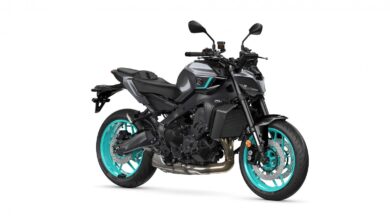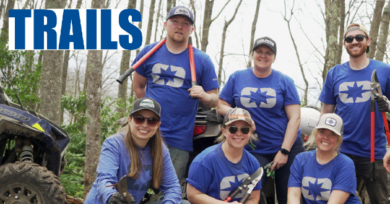A new dimension to the UTV – April 3, 2006
It was a simple next step for Chad and Brent Spooner.
In 2004, the Lake Elsinore, Calif., brothers took possession of a new Yamaha Rhino UTV.
“We got one, drove one and rolled one all within five minutes,” Chad Spooner said.
That’s when they decided they needed to retool one to become a racing vehicle.
They are not alone. UTV racing appears to be a growing sport, although races currently draw only a few entrants — five Rhinos competed in the Parker 250 in January and two Rhinos and a Polaris Ranger competed in the San Felipe 250 in March.
Both Best in the Desert and SCORE International Off-Road Racing ran their first UTV races this spring. They plan a few more trials this spring and summer. The races are run on an exhibition class, and other than basic safety, the racing organizations have set up no regulations.
It wasn’t the number of racers but the number of people calling his organization to say they were interested in racing UTVs that prompted Casey Folks, BITD’s president, to begin the exhibition class.
“The reason we are pursuing the UTV class is because of the response we’ve had from both fabricators, racers and people seeking to race these vehicles,” Folks said. “We felt we had enough phone calls and interest to pursue creating a class.”
Both SCORE and BITD officials say they’re looking at two things: they want to see how UTVs compete on a track created for trucks and ATVs, and they want to see how safe the vehicles are before deciding to make it a points class.
What’s the appeal?
“It fills a niche,” said Cory Sappington, a UTV racer and owner of Desert Toyz of Peoria, Ariz. “It doesn’t go so fast that it scares people.”
How fast does it go? “Oh, 50 mph. Seventy mph with the right modifications,” he said.
“People like to see two people in a vehicle rather than one on a quad or a bike,” Spooner said. “Two people get into it, both in a cage with five-point harnesses, you can crash all you want and walk away.”
Spooner, who owns Rhino Craft custom shop with his brother, Brent, in Lake Elsinore, Calif., said the sport offers him a safe way to compete. He said he has damaged his shoulders and wrists in freestyle BMX competitions, while Brent has injured his back and knee racing quads.
Racing UTVs is not necessarily supported by the OEM industry.
“We don’t find it prudent to customize our product that way,” said Donna Beadle, external relations manager with Polaris.
Race organizers aren’t concerned about customization yet. “We’re concerned if they’re fast enough to hit all their checkpoints before they close,” said Bill Savage, SCORE’s tech director. “We ran them at San Felipe as an experiment to see if they can keep up on the track.” Results were being tabulated several weeks after the event to see if riders hit their checkpoints.
He said safety changes to the cage and the seats were required, and modifications to the motor were prohibited. If the UTV class becomes permanent, Savage said a more detailed set of rules will be developed.
Sappington said he modified his rig with a Desert Toyz roll cage, high-performance shocks, a CDI box, a new air filter and exhaust, a high-compression piston, new wheels and tires, five-point harnesses on new racing seats, a fuel cell, a new rear bumper, new netting and aluminum on the door panels.
There’s a togetherness factor in racing, too. Sappington’s wife, Jeanette, rides shotgun during races. She keeps an eye on the competitors, talks on the radio, handles map duty and calls out any road obstacles.
But Sappington may have found another reason why the sport is catching on. “The younger drivers are a little too aggressive for the machine,” he said. “Old guys in their 40s tend to do better. A conservative approach to driving seems to be more effective.” psb




